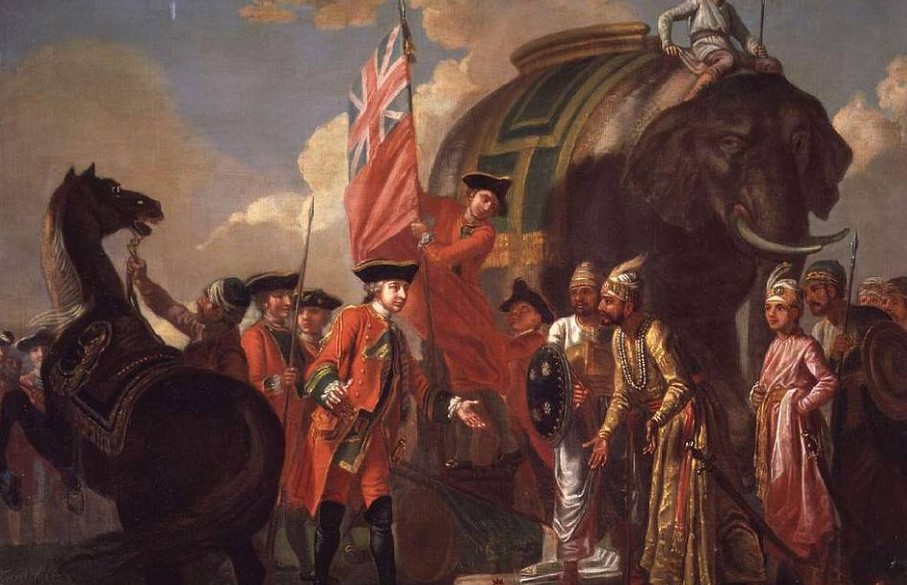
Modern History MCQs – 1 (Arrival of Europeans in India)
Most important multiple choice questions from the chapter – Arrival of Europeans in India MCQs.
Home » UPSC Study Materials » Prelims Express » Chapterwise MCQs » Modern History MCQs » Modern History MCQs – 6 (Revolt of 1857)
Revolt of 1857 MCQs with answers and explanations for preparation of UPSC, State PSCs and Other Examinations
1. Who among the following was the Governor General of India during the revolt of 1857 ?
(a) Lord Canning
(b) Lord Cornwallis
(c) Lord Wellesley
(d) Lord Dalhousie
Correct Answer – (a) Lord Canning
2. Revolt of 1857 was called the ‘First War of Independence’ by who among the following ?
(a) Vinayak Damodar Savarkar
(b) Mahatma Gandhi
(c) Bal Gangadhar Tilak
(d) None of the Above
Correct Answer – (a) Vinayak Damodar Savarkar
3. The revolt of 1857 was mainly started by ?
(a) The Sepoys
(b) The Zamindars
(c) The Peasants
(d)The Middle class
Correct Answer – (a) The Sepoys
4. The revolt of 1857 began in which among the following places ?
(a) Bombay
(b) Meerut
(c) Plassey
(d) Delhi
Correct Answer – (b) Meerut
5. Consider the following places and the leaders of the Revolt :
1. Lucknow → Begum Hazrat Mahal
2. Kanpur → Nana Saheb
3. Jhansi → Rani Lakshmi Bai
Which of the above are correctly matched ?
(a) 1 & 2 only
(b) 2 & 3 only
(c) All of the above
(d) None of the above
Correct Answer – (c) All of the above
6. Consider the following places and the leaders of the Revolt :
1. Bareilly → Kunwar Singh
2. Bihar→ Khan Bahadur Khan
3. Delhi → Bahadur Shah II
Which of the above are NOT correctly matched ?
(a) 1 & 2 only
(b) 2 & 3 only
(c) All of the above
(d) None of the above
Correct Answer -(a) 1 & 2 only
7. Consider the following statements regarding the revolt of 1857 ?
1. The causes of the revolt were mainly economic.
2. The Doctrine of lapse was one of the reasons for the revolt.
Select the correct answer using the codes given below :
(a) 1 only
(b) 2 only
(c) Both 1 & 2
(d) None of the above
Correct Answer – (b) 2 only
Political causes:
Economic Causes:
Social Causes :
Administrative causes:
8. Consider the following statements regarding the reasons for the failure of the revolt of 1857 :
1. Educated Indians did not support it.
2. Soldiers from Punjab and south India did not support the revolt.
Select the correct answer using the codes given below :
(a) 1 only
(b) 2 only
(c) Both 1 & 2
(d) None of the above
Correct Answer – (c) Both 1 & 2
9. Which among the following were the consequences of the great uprising of 1857 :
1. East India Company’s rule ended in India.
2. India now came under the direct rule of the British Crown.
Select the correct answer using the codes given below :
(a) 1 only
(b) 2 only
(c) Both 1 & 2
(d) None of the above
Correct Answer – (c) Both 1 & 2
Results of the revolt of 1857:
10. Sir Hugh Rose described who as ‘the best and bravest military leader of the rebel’ ?
(a) Begum Hazrat Mahal
(b) Rani Laxmi Bai
(c) Kuwar Singh
(d) Bahadur Shah Zafar
Correct Answer – (b) Rani Laxmi Bai
11. Who among the following was the Mughal emperor of Delhi during the revolt of 1857 ?
(a) Begum Hazrat Mahal
(b) Shah Alam II
(c) Jahandar Shah
(d) Bahadur Shah Zafar
Correct Answer – (d) Bahadur Shah Zafar
More questions are coming soon. Join us on Whatsapp for latest updates: Join CivilsCracker on Whatsapp

Most important multiple choice questions from the chapter – Arrival of Europeans in India MCQs.

Most important multiple choice questions from the chapter – Battle of Plassey and Battle of Buxar MCQs.

Most important multiple choice questions from the chapter – Social and Religious Reform Movements MCQs.

Most important multiple choice questions from the chapter – Anglo Mysore Wars and Anglo Maratha Wars MCQs.

Most important multiple choice questions from the chapter – Governor Generals of India MCQs.

Most important multiple choice questions from the chapter – Organizations before Indian National Congress MCQs.

Most important multiple choice questions from the chapter – Important Sessions of Indian National Congress MCQs.

Most important multiple choice questions from the chapter – Partition of Bengal and Swadeshi Movement MCQs.

Most important multiple choice questions from the chapter – Surat Split and Lucknow Pact MCQs.

Most important multiple choice questions from the chapter – Arrival of Gandhi and Jallianwala Bagh Massacre MCQs.

Most important multiple choice questions from the chapter – Khilafat and Non Cooperation Movement MCQs.

Most important multiple choice questions from the chapter – Simon Commission and Nehru Report MCQs.

Most important multiple choice questions from the chapter – Civil Disobedience Movement MCQs.

Most important multiple choice questions from the chapter – Communal Award and Poona Pact MCQs.

Most important multiple choice questions from the chapter – Individual Satyagraha and Cripps Mission MCQs.

Most important multiple choice questions from the chapter – Quit India Movement MCQs.

Most important multiple choice questions from the chapter – Indian National Army and Royal Indian Navy Mutiny MCQs.

Most important multiple choice questions from the chapter – Cabinet Mission and Formation of Constituent Assembly MCQs.

Most important multiple choice questions from the chapter – Independence and Partition of India MCQs.
We are adding new Notes, Chapterwise MCQs, Quizzes, Previous Years Questions everyday
We are adding new Notes, Chapterwise MCQs, Quizzes, Previous Years Questions everyday